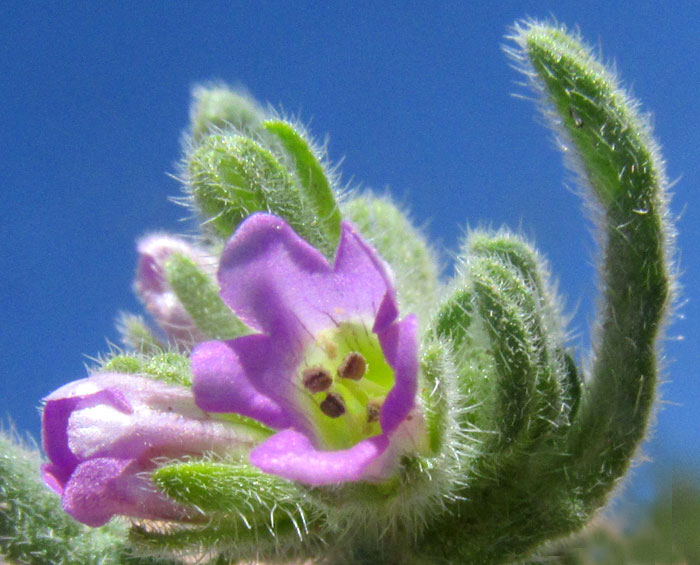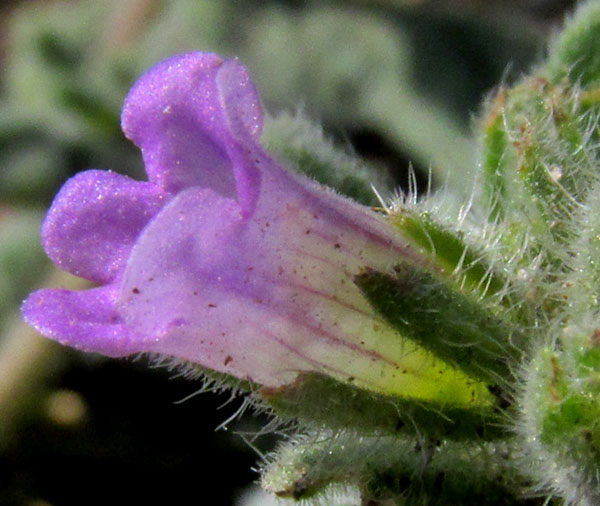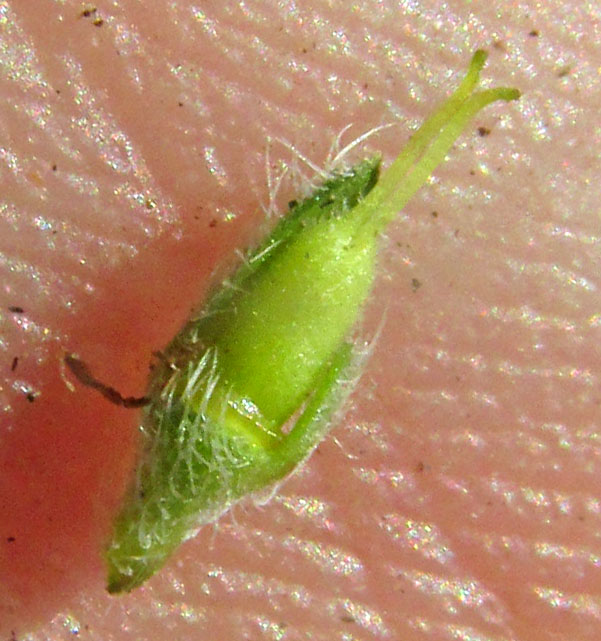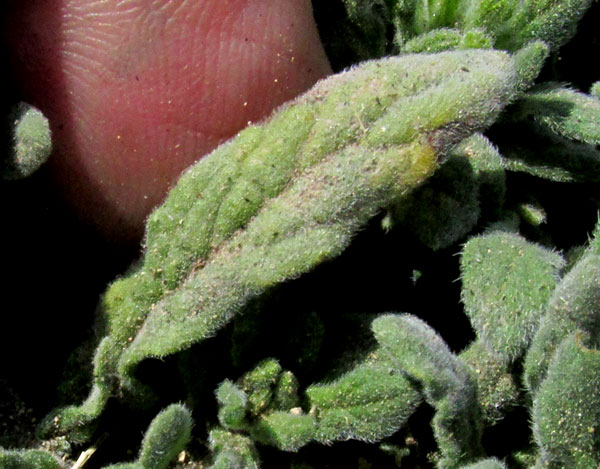Excerpts from Jim Conrad's
Naturalist Newsletter
entry dated June 8, 2022, issued from near Tequisquiapan, elevation about 1,900m (6200 ft), ~N20.57°, ~ W99.89°, Querétaro state, MÉXICO
WOODY CRINKLEMAT

On the floor of an amphitheater-shaped rock quarry, flowing water had deposited a flat layer of clay. During a long dry season with scorching sunlight and high heat, the clay had hard-baked into a surface where cows could leave dried-out paddies but no hoof-prints, but not even an invasive grass was growing. However, as the above picture shows, a few scattered plants did take hold, exhibiting and ability to not only survive in such a harsh environment, but apparently to flourish.

Up close, the mats of dark green herbage were punctuated here and there with tiny flowers like the one shown above. The corolla is only about 7mm long (0.3 inch), so a hand lens had to be used to see potential identification features. There were five stamens not all of the same height, and in the picture four brown, ball-shaped anthers can be seen. The green parts' dense cover of white hairs cuts down on water loss to the dry wind, and shade the body's soft parts from overheating and being damaged by sunburn.

From the side it could be seen that the corolla's five lobes were all the same shape, and shorter than the length of the tube they united to form below. A very important feature is revealed below:

That's a flower's female parts without the corolla and calyx. The oval ovary at the bottom is the ovary, the future fruit. Atop the ovary arise two styles, not one, a single style being much more common for such fruit types. Each style is tipped with modest stigmas, where pollen grains germinate. The feature of twin styles atop an oval ovary is important because the previously noticed features tell us that we have a member of the Borage Family, the Boraginaceae, and within that fair-sized family, at least in our area, more genera display deeply divided ovaries than undivided, oval ones like this. The above undivided ovary tells us that our plant isn't any of the majority of Borage Family species it otherwise might be.

Above, that's the upper surface of a fully developed leaf, possibly from last season. Below, that's the same leaf, showing how the margins curl under, surely saving on water loss from stomata openings on the undersurface.

All these features and more lead us to what in English often is called the Woody Crinklemat. It's TIQUILIA CANESCENS, distributed from extreme western Texas, southern Nevada and southeastern California south through arid and semiarid Mexico to here in Querétaro in central Mexico. About 27 species in the genus Tiquilia are recognized, all in arid and semiarid regions of the Americas, and all are called "crinklemats." Identification was made possible by Alfred T. Richardson's 1977 "Monograph of the Genus Tiquilia (Coldenia, sensu lato), Boraginaceae: Ehretioidae."
In Richardson's monograph, a source is quoted describing this species' root system: It's a "... perennial root system ... with horizontal and vertical roots, allowing absorption of water from light showers as well as the less transient moisture deeper in the soil." Shallow roots, and deep ones, with medium-level roots missing: That's the main adaptation enabling our plants to thrive in such a dried-out, sun-baked environment. I'm guessing that the perennial root system is the source of the common name for this particular species, Wood Crinklemat, for I find nothing woody about the plants I've seen. For the rest of the name, when it's really dry, the leaves crinkle.
Actually, here more Wood Crinklemats occupy former cornfields that were plowed two or three months ago, with only one light shower since then, than in places like the quarry's hard, thin soil. This flexibility of habitat selection makes the plant even more impressive.
In Richardson's monograph, sources are quoted saying that in Mexico a decoction of this species' leaves and stems is used to bathe wounds. It's also used in sweat baths, and to keep people from going to sleep after eating.